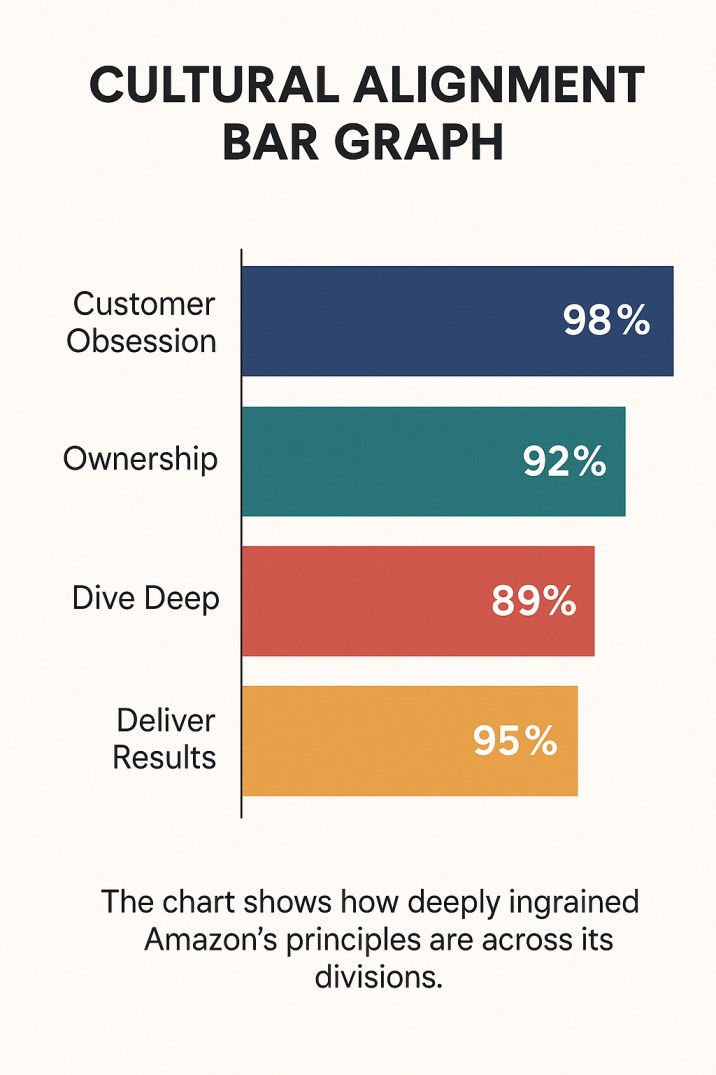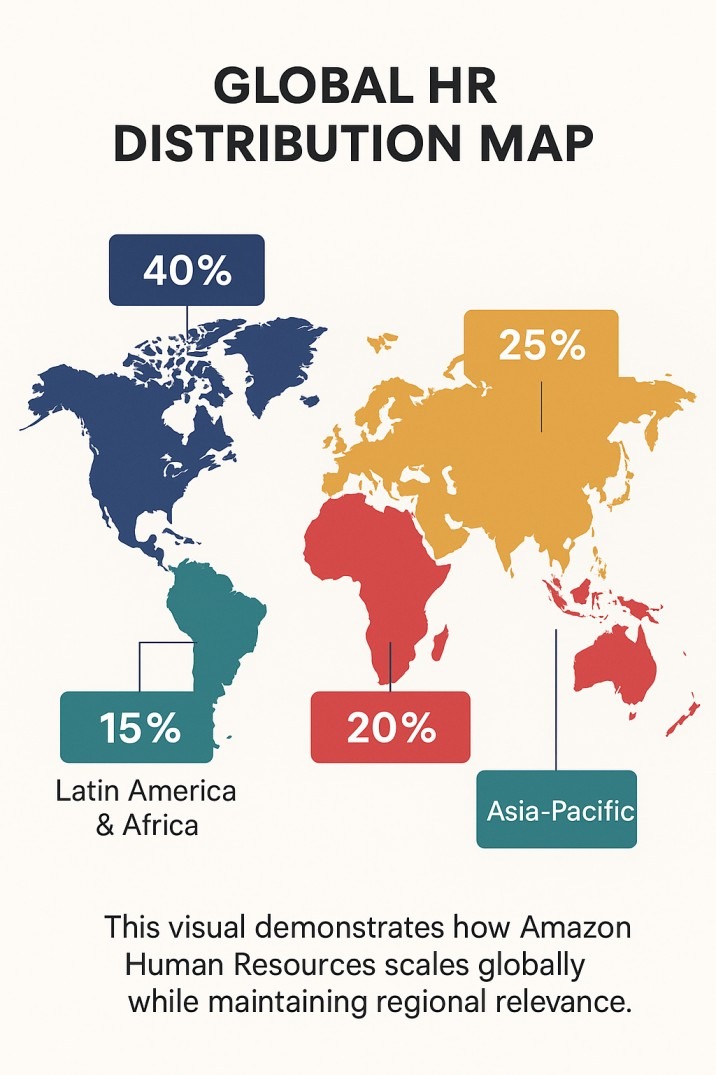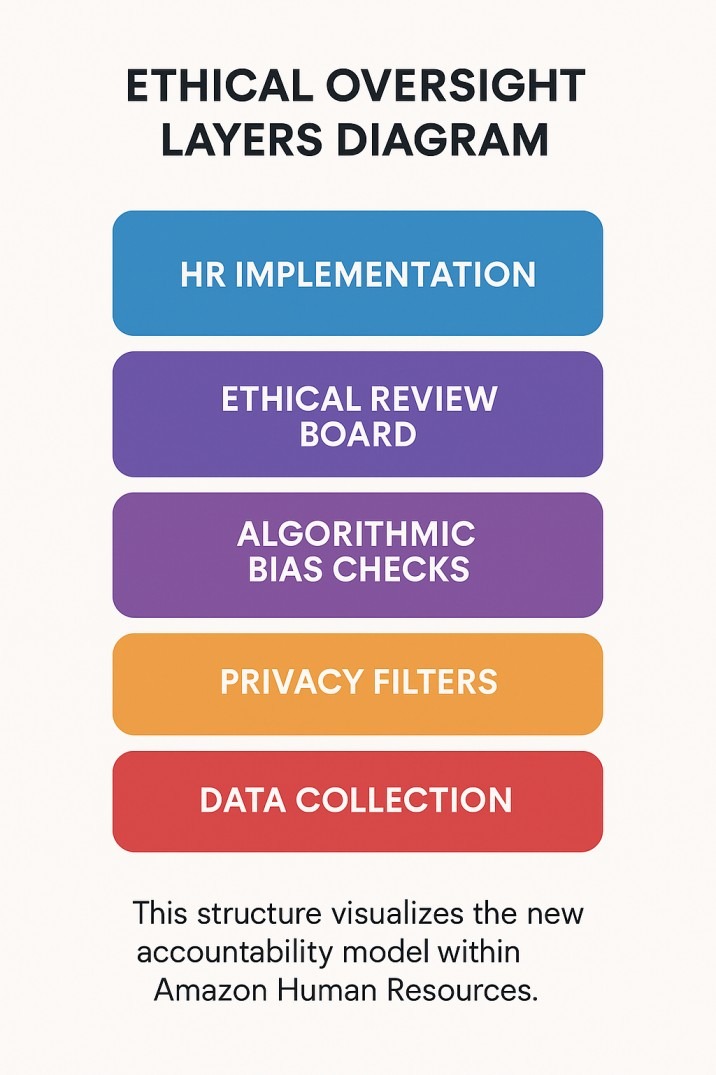The term Amazon Human Resources no longer represents a traditional HR department. It’s an ecosystem—an integration of technology, data, and human insight operating at an unmatched scale. With more than 1.5 million employees worldwide, the Amazon Human Resources department stands as a prototype for the future of work itself, influencing how global corporations think about talent, performance, and culture.
Amazon Human Resources represents a fusion of technology, analytics, and empathy at global scale. Data-driven systems power decisions while human-centered programs sustain growth. Its model of automation, ethics, and adaptability defines the next era of people management where innovation and compassion evolve side by side.
The Scale Behind the System
What makes Amazon Human Resources fascinating is the scale of its challenge. Managing the largest workforce in the private sector demands precision and adaptability. Every decision, from warehouse staffing to leadership development, is driven by advanced analytics. HR here is not a support function—it’s a command center. Algorithms assess employee performance patterns while predictive models guide hiring spikes ahead of shopping seasons.
Yet beyond metrics, Amazon Human Resources still carries a human core. Programs like “Career Choice” provide education funding for hourly employees, showing that scalability doesn’t eliminate empathy—it redefines it.
Data as the Heartbeat of Amazon HR
Inside Amazon Human Resources, data is the heartbeat. Every step—from recruiting to exit interviews—is logged, analyzed, and modeled. AI tools identify high-performing patterns and burnout indicators before they escalate. This reliance on data doesn’t replace judgment—it enhances it.
For example, Amazon Human Resources tracks engagement sentiment in real-time through feedback dashboards. HR business partners can act within days rather than months, closing the gap between insight and action. The result is a responsive and adaptive HR model that aligns closely with operational goals.
Culture Built on Mechanisms, Not Slogans
At Amazon Human Resources, culture is not defined by posters or slogans—it’s coded into systems and leadership principles. Every employee evaluation references Amazon’s 16 leadership principles, including “Customer Obsession” and “Invent and Simplify.” These aren’t theoretical ideals—they guide promotion decisions, feedback cycles, and even peer reviews.
This structure creates consistency. It means an HR manager in Seattle evaluates leadership potential using the same framework as one in Hyderabad. It’s a cultural algorithm—engineered for scale and fairness, but not without controversy. Some former employees describe it as intense or unforgiving, yet even critics admit that Amazon Human Resources has perfected the art of measurable culture.

Automation and the Human Paradox
As Amazon Human Resources automates processes—AI-driven hiring filters, chatbots answering HR queries, machine learning predicting absenteeism—it faces a paradox: how to preserve humanity amid automation. The HR department is actively experimenting with hybrid HR models, where technology assists rather than replaces decision-making.
Employees interact with digital assistants for vacation approvals or policy inquiries, yet personal coaching and wellness programs remain human-led. The future of Amazon Human Resources lies in this delicate balance—combining the speed of algorithms with the empathy of conversation.
The Global Expansion Model
Globalization adds another layer of complexity. Amazon Human Resources operates in over 50 countries, each with unique labor laws, social expectations, and employee needs. This diversity forces innovation. For instance, in European markets, HR focuses on compliance and worker councils, while in the U.S., data-driven optimization dominates.
Such adaptability proves that the Amazon Human Resources department isn’t a static entity—it’s an organism that evolves with geography. Its localized HR teams are empowered but aligned with a global strategy.

Employee Experience as a Science
The employee experience at Amazon is both structured and measured. Amazon Human Resources has transformed “experience” into a quantifiable variable. Everything from onboarding to exit surveys contributes to what HR calls the “Voice of the Associate” database.
The department tests new benefit programs like product prototypes—launch, collect feedback, iterate. In essence, Amazon Human Resources applies the same agile methodology used in software development to human management. The idea is simple but profound: improve HR not through policy memos but through iteration and data-backed insight.
The Ethical Crossroads
As the Amazon Human Resources model becomes more automated and predictive, ethical questions emerge. How much monitoring is too much? Can data truly measure satisfaction or creativity? The department acknowledges these debates and is investing in what it calls “responsible data use frameworks.”
Amazon has started including HR ethicists in data governance committees. Their role is to ensure predictive insights don’t become predictive bias. The evolution of Amazon Human Resources will depend not only on its innovation but on its ability to humanize that innovation responsibly.

Learning, Development, and the 2030 Vision
The future of work according to Amazon Human Resources isn’t remote or hybrid—it’s skill-based. The department predicts that by 2030, traditional job titles will fade in favor of “capability clusters.” This future demands continuous upskilling.
To prepare, Amazon Human Resources has expanded internal academies and AI-driven learning platforms. Machine learning tailors course recommendations based on each employee’s career trajectory. This transforms HR from a reactive support function to an active career architect.
Conclusion
The Amazon Human Resources department is not merely managing people—it’s shaping a philosophy for the future of work. It blends automation with empathy, analytics with ethics, and global strategy with local adaptation. Whether admired or critiqued, its influence is undeniable.
As organizations worldwide look toward a post-digital workforce, Amazon Human Resources offers a case study in how data and human values can coexist at scale. The department’s greatest achievement is not just operational excellence—it’s proving that even in an algorithmic age, human resources can still be profoundly human.
Andrea Balint is a writer and researcher focused on human behavior, workplace psychology, and personal growth. Through her work at CareersMomentum, she explores how mindset, leadership, and emotional intelligence shape modern careers. With a background in communication and HR development, she transforms complex ideas into practical insights that help readers build clarity, confidence, and professional purpose.
